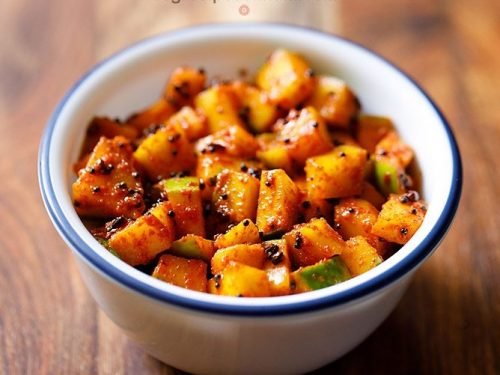Project Report For Instant Pickle Manufacturing
Introduction
Project report for Instant Pickle Manufacturing is as follows.
Instant pickle, a dry pickle mix, is a convenient culinary product that may be used in lieu of traditional pickles. It is a novel idea in comparison to the classic pickle, which requires a complicated, difficult, and time-consuming preparation and preservation procedure.
The CFTRI has standardized the procedure for preparing an instant lime and mango pickle mix that can be readily reconstituted into a pleasant pickle by just adding oil and water. The dry mix is advantageous because it is convenient, has a higher keeping quality, has a relatively cheap manufacturing cost, and requires less packing and transportation.
Project Report Sample On Instant
Pickle Manufacturing
Get Completely Custom Bankable Project Report
By implementing appropriate market strategies, the ever-expanding market for pickles, both local and export, may be effectively utilised. Raw mango, lime/lemon, dry salt, spice mix, and packaging material are the primary raw materials needed.
The method is straightforward and includes selecting completely developed commodities for pickling, washing and cutting into appropriate sizes, brine curing under ideal circumstances, drying appropriately in the sun or mechanical drier, adding dry spice mixes, and packaging in unit containers.
After combining water and oil and allowing it to sit overnight, the product is ready to use. Processing equipment includes a dryer (optional), stainless steel containers, roasting pan, spice grinder, heat sealing machine, and other handling devices.

Apart from essential meals, people like spicy condiments that help make food more pleasant and delectable. Pickles are an excellent appetiser and digestion aid. Pickles come in a variety of types and are enjoyed throughout the year.
Pickle, a spicy preparation, has acquired prominence on the Indian table in this setting. Pickling is an ancient art form, and a range of these goods are manufactured in Indian households. Pickling is a process that involves curing fruits and vegetables by salting, acidifying, adding vinegar and/or oil, and spices. Making pickles is a lengthy procedure.
Often, the cost of the glass container and oil is more than the cost of the pickle itself. A new method has been created for producing a quick pickle mix that can be easily transformed into a tasty pickle at home by adding water and oil.
Thus, instant pickle is expected to become popular and acceptable for a variety of reasons, including increased shelf life, the ability to add more spices at the user’s discretion, relatively cheap manufacturing costs, ease of handling and packing volume reduction, and low shipping costs.
Numerous variants of dry pickle mix may be created by combining dried mango, lime (lemon), green chillies, tomatoes, carrots, and other leaf types.
Market Potential Of Instant Pickle Manufacturing
Expenses

Product Cost Breakup

Reveneue Vs Expenses

Market Trend

In 2020, the worldwide pickles market is expected to reach a value of US$ 10.6 billion. Looking forward, IMARC Group forecasts that the market will expand at a CAGR of around 4% between 2021 and 2026.
Pickles are a good source of vitamins, iron, calcium, and potassium, as well as having anti-oxidant effects. They are created by either anaerobic fermentation in brine or immersion in vinegar to preserve or prolong the life of fruit, vegetable, or a combination of both.
They are well-known for a variety of health advantages, including improved digestion, provision of important minerals and vitamins, and the prevention of ulcers. In recent years, producers’ strong advertising efforts have enhanced the appeal of cross-cultural cuisine, which has aided in the growing global demand for pickles.
Non-GMO and organic pickles have gained popularity among health-conscious customers in recent years. These goods are free of preservatives and other synthetic chemicals that have been linked to adverse health effects.
Additionally, producers are producing new flavours in response to customers’ local tastes and preferences. Additionally, prominent brands provide easy and cost-effective packaging choices for pickles to allow usage and consumption on the go.
These packaging options include glass jars, PET jars, and single-serve packs, as well as stand-up and multi-layered coextruded pouches and injection moulded polypropylene containers with flexible heat-sealable and peelable lids.
